Meeple Mountain had an opportunity recently to have a dialogue with Min and Elwen, the designers of Lost Ruins of Arnak, the instant classic published by Czech Games Edition. We wanted to learn more about the early design elements built into the game as well as their motivations, particularly in the wake of the successful expansion released last year, Lost Ruins of Arnak: Expedition Leaders.. Join us as learn more from this incredible combination in our conversation below! (Questions were shared with the designers in advance; this conversation was edited for clarity.)

For first-time designers, you have done an incredible job building a game that is both interesting for “core”/regular gamers and interesting to those who are less familiar with the mechanics in the game, such as light deck-building strategies and technology tracks. What are some of your inspirations in terms of design philosophy?
Mín – Our game design philosophy is very simple. Our aim was to create a game that we would enjoy playing ourselves. We hoped for the game to be easy to teach and quick to grasp. We also like eurogames with a strong theme, so we tried to design the game around the theme – it was actually a lot of fun trying to tie the mechanics and theme together. It was one of my favorite parts of the process. And, of course, it is great to aim for as much variability and replayability as possible.
On the other hand, we do not really like confrontation or “take that!” feeling in games. Competing for options is great, but usually, I would much rather try to create something and outsmart other players, than actually attack other players directly within a game.
One of the most interesting mechanics in the game is the fact that players only get two workers to use in each round. As you tested the game, were there ever any iterations where there were more workers? Less? I always feel like I am one worker short in every round of the game!
Mín – We did try a few variations on the number of workers. But basically adding more workers takes a little bit away from the deckbuilding part since you then use more of your cards just for tickets. It is a question of getting the balance right.
We decided to keep the two workers in the base game in the end, but we explored the concept of having more workers with some of the characters in the Expedition Leaders expansion.
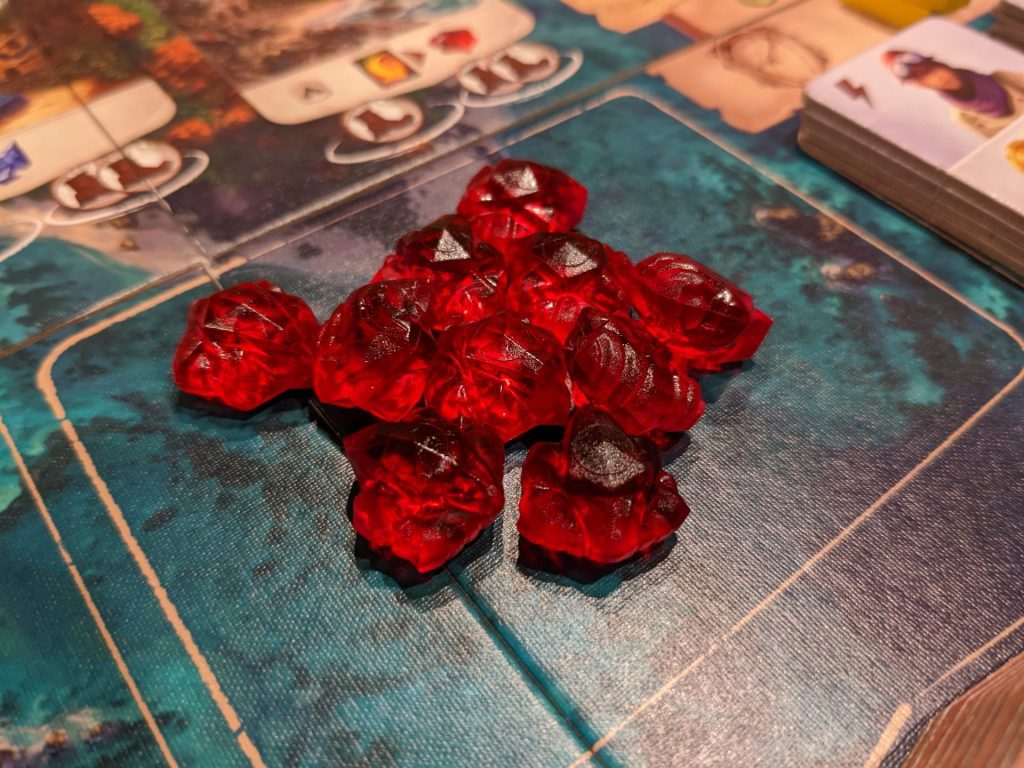
I’ve played Lost Ruins of Arnak as a 2-player game about a dozen times now, and while other games don’t always scale well, Arnak does a great job at 2, 3, and 4 players. Did the two of you design the game with the head-to-head component in mind? During the pandemic, I believe this led many people to enjoy your game in smaller groups.
Mín – I think this reflects that we wanted to design a game we would enjoy – and a lot of the time we play at two (since it is hard to go out and meet people while having small kids, plus the pandemic hit while we were designing…). So you could say this was one of our requirements for the game: An interesting game you can play at two and can squeeze into an evening after the kids have gone to bed.
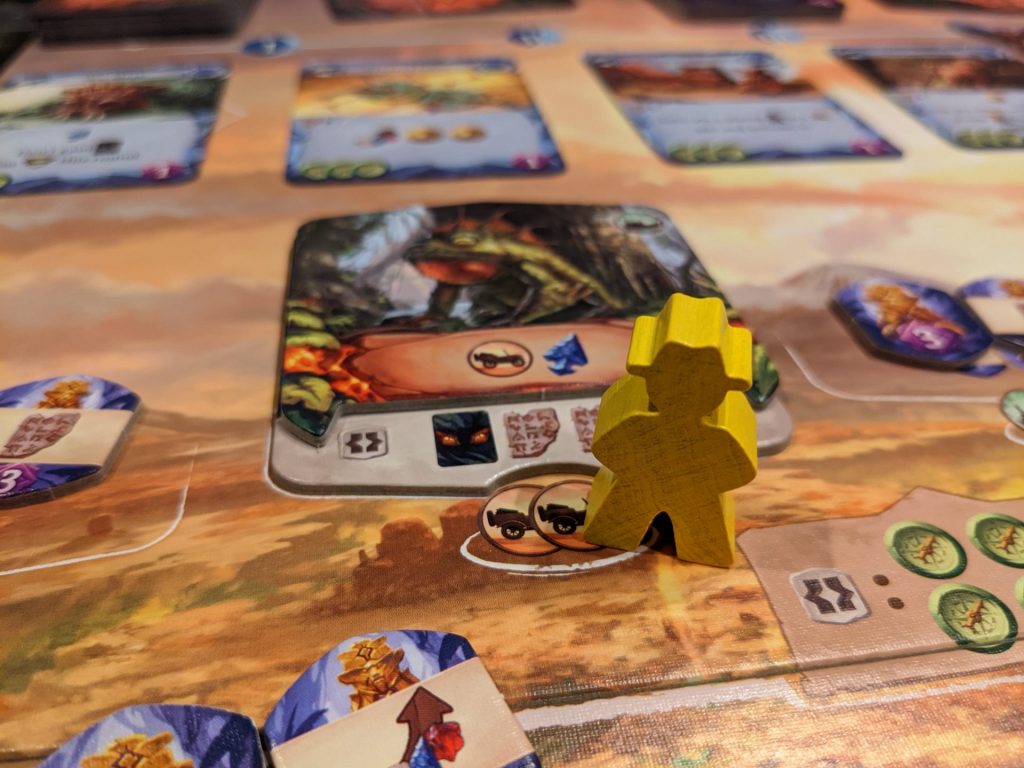
The choice of language in games is really interesting to me. The first time I played Arnak, I was struck by the term “overcome” when it relates to defeating Guardians. It’s not “beat”, or “defeat”, or “destroy”…overcome! (And in many cases, you can overcome Guardians with coins, or tablets, or other non-violent means.) How did you come to the decision to include bosses/monsters, while also moving past these Guardians with non-violent solutions?
Mín – I am personally always a bit appalled by games seldom presenting you with the option to solve things without violence. In Arnak, you are a bunch of archeologists, researchers – sure, you are tough and can take care of yourself when necessary, but that does not mean you will shoot everything in sight. You are on Arnak because of your fascination with the ancient culture and these Guardians were very much a part of the culture – so I imagine you would approach them with a lot of curiosity and respect, even though you may fear them at the same time. They carry an air of mystery and a promise of uncovering secrets if you were to understand them more. So thematically, this fits a lot better, I believe.

One of the people in my “review crew” has played the base game of Arnak over 70 times on Board Game Arena. The BGA platform has really expanded the way gamers can try out the game. What thoughts do you have regarding the BGA implementation? Was this a conscious decision to build interest in the game through the digital platform?
Mín – Partly this decision was affected by the pandemic in two ways: for one, we wanted the players to be able to play the game, but it was hard to meet anyone during the quarantines. The second was that the game quickly sold out and the pandemic contributed to the unavailability of certain materials, preventing us from producing enough of the game in time, but we wanted players to be able to try the game and see whether they like it, and BGA seemed like a good fit.
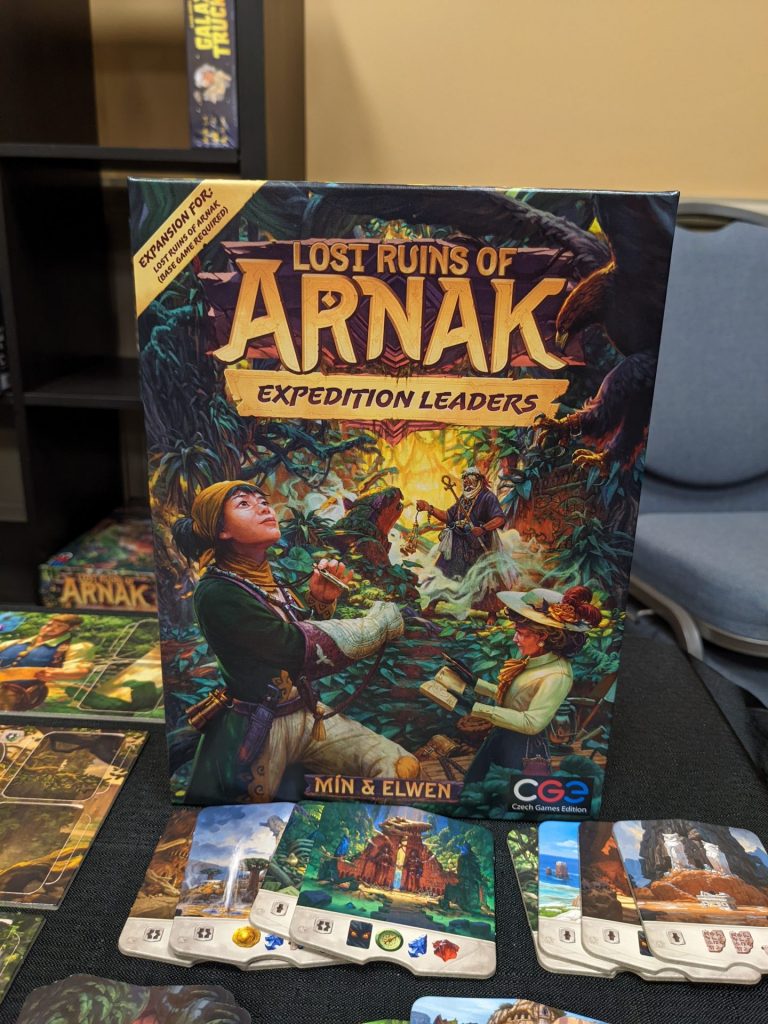
One of my gripes with the base game of Arnak is that there were not enough Items and Artifacts in the game. The expansion, Expedition Leaders, really attacks this issue by including more Items, Artifacts, and even different starting decks for each player. What were some of the thoughts behind your design for the expansion?
Mín – There were two things we hoped to achieve through this expansion: first, we wanted to give players more “stuff” to discover, more variability. We wanted to make the game a fresh experience again for people like your friend who have 70+ games under their belt. Thus the new cards, guardians, assistants, and research tracks.
Second, we really wanted to try creating asymmetrical starting powers – partly because we like that in games and partly because it was an interesting design challenge. It was a lot of fun to design, and I am happy with the result. I think they definitely bring a lot more you can discover into the game – suddenly, new strategies seem viable. How you view the value of certain cards may also change depending on what character you or the other players are playing.
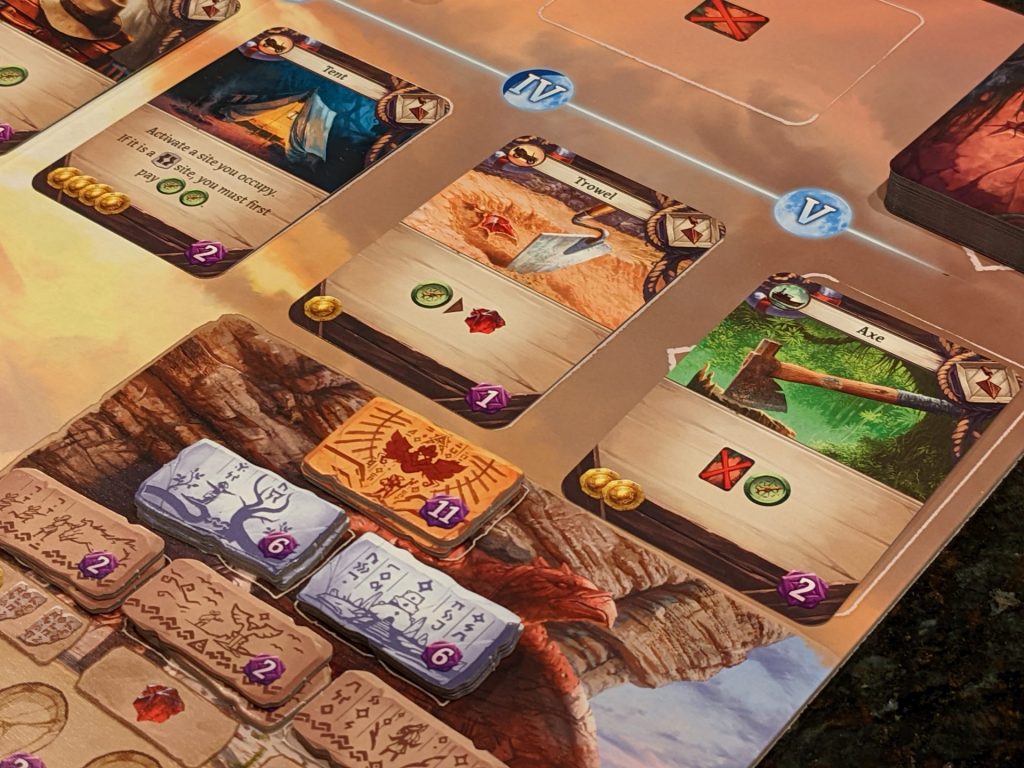
I understand that the two of you are partners outside of the workplace. How was it designing a game with your partner? Did the two of you always plan to design a game together? Were there any particularly tough moments during the design process, in terms of disagreements? How did you split the responsibilities of coming up with the game, then building on your core ideas?
Mín – It’s fun to design games with my husband. We always played a lot of board games, and naturally, after a time we started wondering what it takes to create a game. We usually spent a lot of time after playing the game analyzing what elements we enjoyed, and whether there was something that could make it even better. That really helped us to build a basic understanding of what already exists, what works, and what doesn’t – as well as our personal likes and dislikes.
When actually designing, we found out that we usually produce the best results when we can discuss our ideas – it helps us to find any potential problems a lot quicker and it eliminates investing a lot of time and effort into a flawed design. Of course, there is a lot of potential for disagreements there, but if we really cannot agree on something, we can always agree to disagree on the issue and then try to prove whether it works by creating and playing a prototype.
A big thanks to Min & Elwen for taking the time to answer our questions! We’ll have a review of the Arnak expansion in the coming weeks.


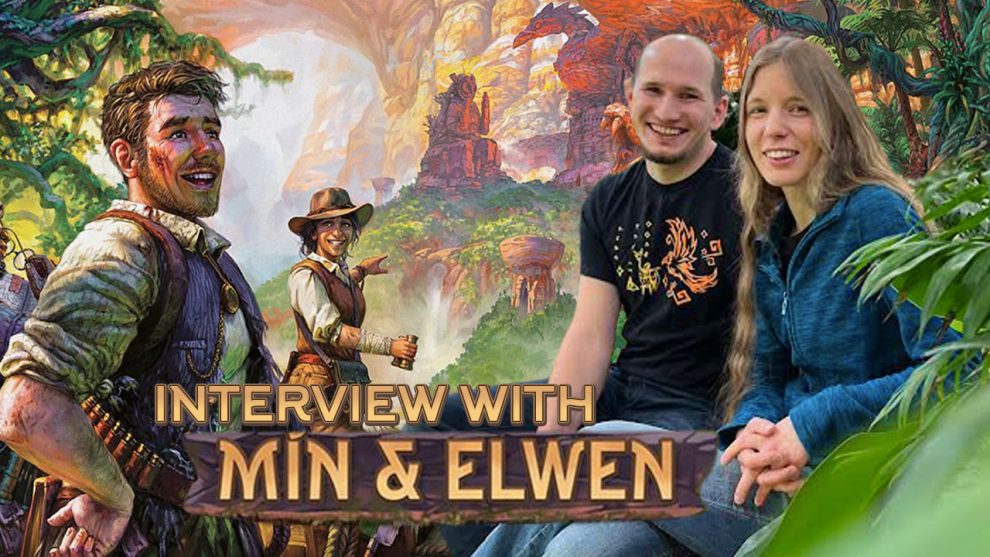


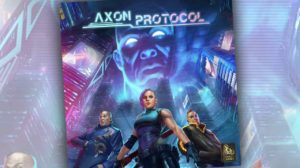
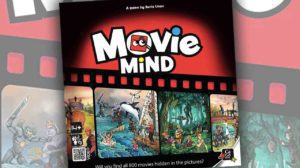





Add Comment